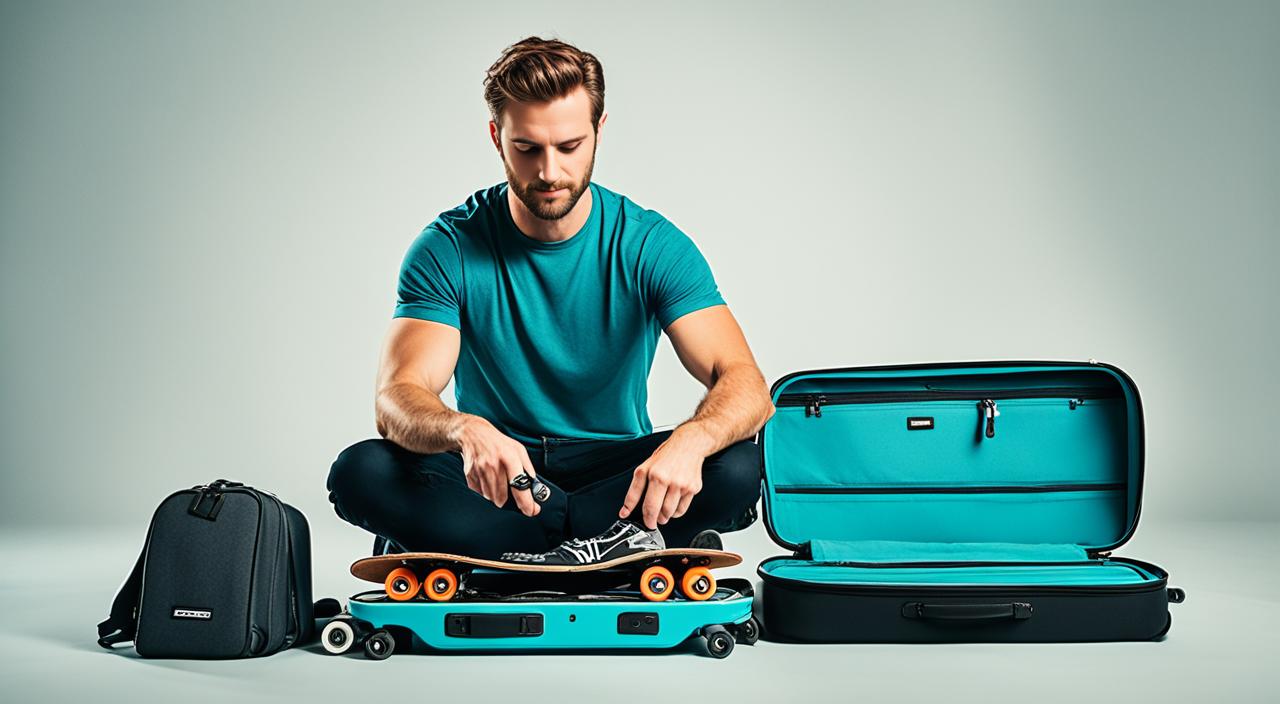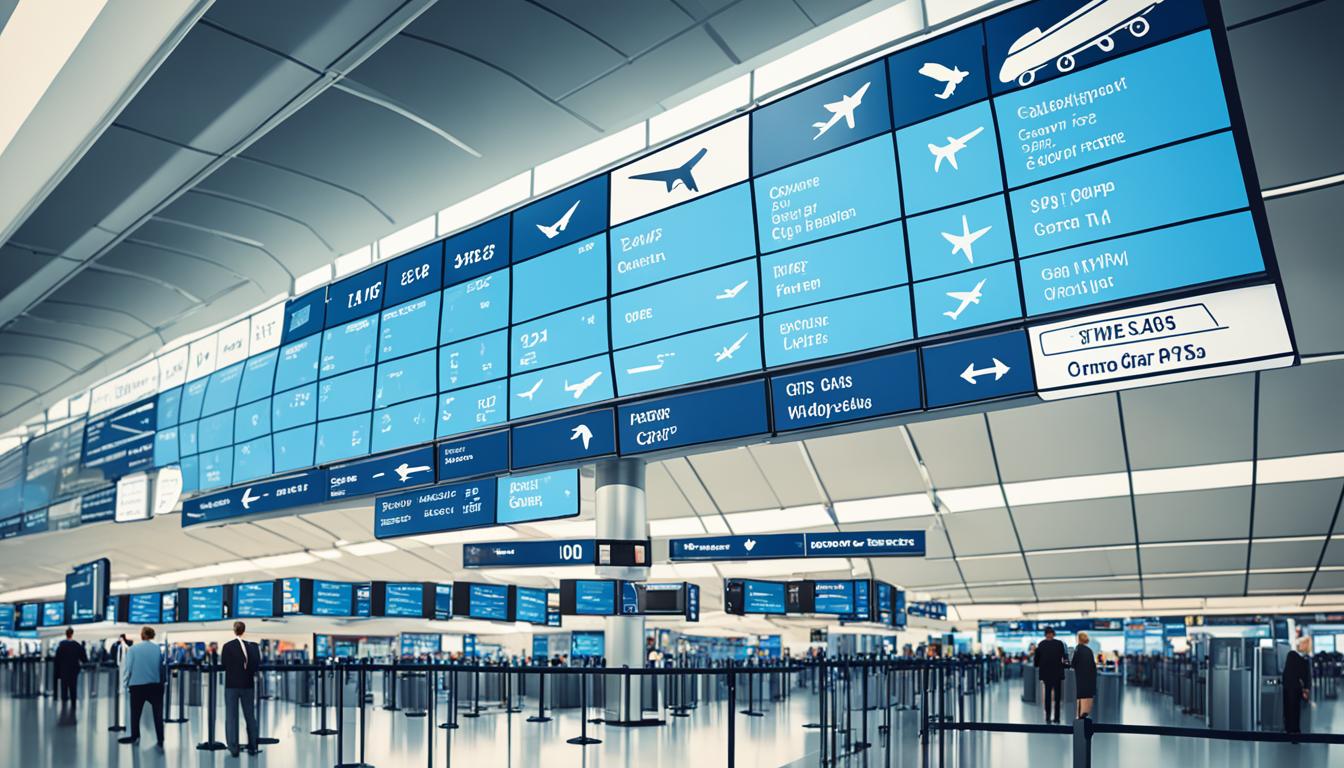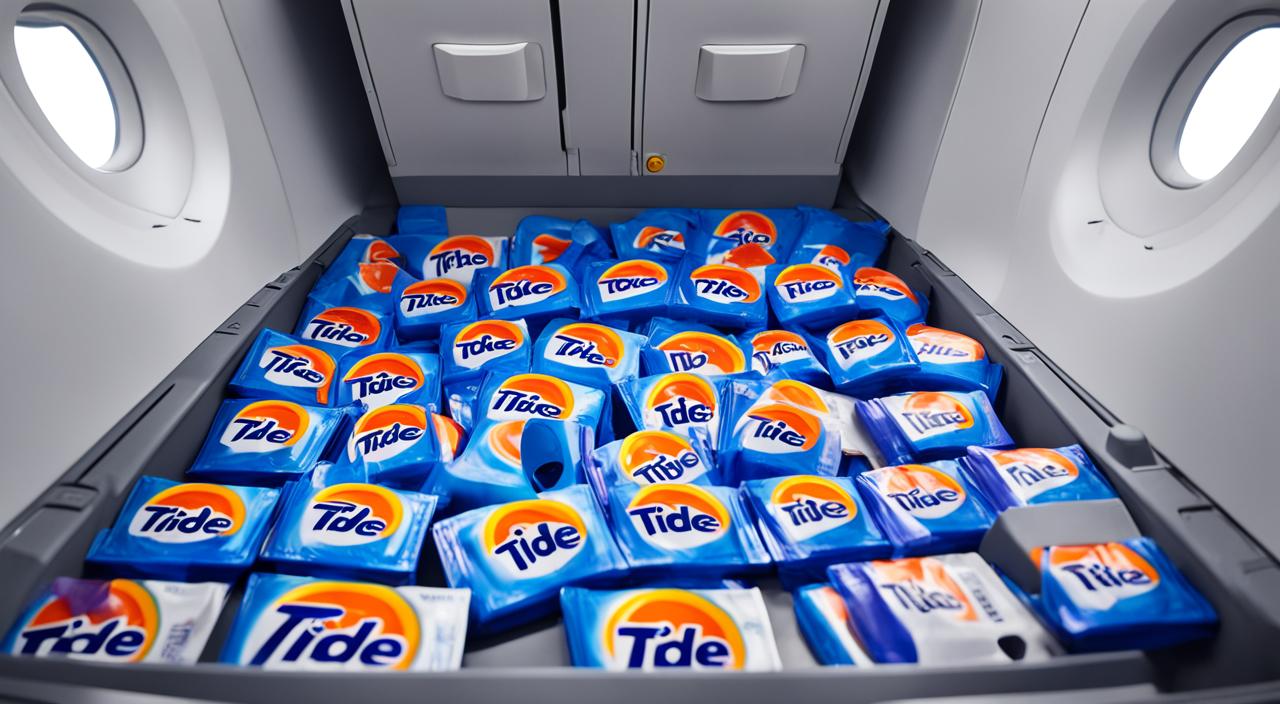
You might be wondering if you can bring your skateboard on a plane for your next trip. The good news is that you can bring a skateboard on a plane, but there are important things to know.
Each airline has its own policies, so it’s important to check with your specific airline before your trip. Most airlines allow skateboards as either carry-on baggage or checked baggage, but dimensions and weight restrictions may apply.
It’s also important to pack your skateboard properly to prevent damage during transit. Let’s dive into the details of traveling with a skateboard on a plane.
Airline Policies for Skateboards
To provide a better understanding of airline policies for skateboards, refer to the table below for an overview of some major airlines and their specific regulations:
| Airline | Packing Option |
|---|---|
| Alaska Airlines | Checked baggage for a fee |
| American Airlines | Checked baggage for a fee |
| Allegiant | Not allowed – electric skateboards or self-balancing boards powered by lithium batteries |
| Air Canada | Allowed with size and weight restrictions |
| Delta Airlines | Allowed as sports equipment, subject to baggage fees and size/weight limits |
| Frontier Airlines | Checked baggage, not allowed as carry-on |
| Hawaiian Airlines | Allowed as checked baggage, subject to baggage conditions and fees |
| JetBlue Airlines | Allowed as carry-on or checked baggage with specific guidelines |
| Ryanair | Allowed as carry-on, must meet cabin bag allowance size restrictions |
Please note that the table above provides a general overview and may be subject to change. It’s always recommended to check with your specific airline to confirm their policies regarding skateboards and any applicable fees.
When it comes to traveling with your skateboard, it’s essential to familiarize yourself with the specific policies of the airline you’ll be flying with. Airline policies for skateboards can vary, so it’s crucial to know whether you can bring your skateboard as carry-on baggage or if it needs to be checked.
Some airlines allow skateboards as carry-on baggage, while others require them to be checked. If your skateboard meets the size and weight restrictions, you may be able to bring it on board as part of your carry-on luggage.
However, it’s important to note that you may need to remove the wheels or take other steps to store it securely to prevent it from rolling around the cabin.
If your skateboard exceeds the airline’s carry-on baggage restrictions or you simply prefer to check it, make sure to pack it properly to prevent any damage during transport. This can include placing the skateboard deck down at the bottom of your checked luggage or utilizing a skateboard-specific bag for added protection.
Airlines and Their Skateboard Policies
When it comes to traveling with skateboards, it’s important to know the specific policies of each airline you plan to fly with. Different airlines have varying rules and regulations for transporting skateboards, including whether they allow them as carry-on or checked baggage, and any applicable fees.
Here are a few examples of airlines and their skateboard policies:
- Alaska Airlines: Allows skateboards as checked baggage for a fee.
- American Airlines: Generally does not allow skateboards as carry-on baggage, but they can be checked for a fee.
- Allegiant: Does not allow electric skateboards or self-balancing boards powered by lithium batteries.
- Air Canada: Allows skateboards as long as they meet size and weight restrictions.
- Delta Airlines: Allows sports equipment, including skateboards, subject to baggage fees and size/weight limits.
- Frontier Airlines: Does not allow skateboards as carry-on baggage, must be checked.
- Hawaiian Airlines: Accepts skateboards as checked baggage, subject to baggage conditions and fees.
- JetBlue Airlines: Allows skateboards as carry-on or checked baggage, with specific guidelines.
- Ryanair: Allows skateboards as carry-on baggage, must meet cabin bag allowance size restrictions.
These are just a few examples, as each airline has its own unique policies. It’s important to check with your specific airline for their skateboard policies and any applicable fees before your trip. By being aware of the rules in advance, you can ensure a smooth and hassle-free journey with your skateboard.
Tips for Packing Your Skateboard
Properly packing your skateboard is essential to protect it from damage during your flight. Follow these tips to ensure your skateboard arrives safely at your destination:
Loosen the Trucks
To make your skateboard more compact, start by loosening the trucks. Turning the kingpin nut counterclockwise will make it easier to fit your skateboard into your carry-on bag or checked luggage.
Deck-Down Placement
When packing your skateboard, place it deck-down at the bottom of your bag or suitcase. This position helps to distribute the weight evenly and minimize the risk of damage to the trucks or wheels.
Padding and Protection
Surround your skateboard with clothes or padding to create a cushioned layer. This will keep your board snug and protected during the journey. Avoid leaving empty spaces in your bag or suitcase to minimize any movement or shifting.
Consider Baggage Size and Weight Restrictions
Before packing your skateboard, ensure that your carry-on bag or checked luggage complies with the airline’s size and weight restrictions. It’s important to be aware of these guidelines to avoid any issues during the check-in process.
Follow Airline Guidelines
Each airline may have specific instructions or requirements for packing your skateboard. Be sure to check their guidelines and recommendations before your flight. Following their instructions will help ensure a safe and hassle-free journey for your skateboard.
Use Protective Gear
In addition to packing your skateboard properly, it’s essential to use protective gear such as skateboard bags, sleeves, or wraps. These accessories can provide an extra layer of protection and help prevent scratches or dings during transit.
Traveling with a skateboard on a plane is possible, but it requires some preparation and awareness of airline policies. Each airline has its own set of rules regarding skateboards as carry-on or checked baggage, along with potential fees.
It’s important to check with your specific airline ahead of time to understand their requirements and avoid any surprises at the airport. When packing your skateboard, ensure it’s properly secured and protected to prevent damage during transit.
By following these guidelines and tips, you can enjoy a smooth journey with your skateboard, ready to hit the streets or skate parks at your destination. Remember, a little planning goes a long way in ensuring your skateboard travels safely with you.






